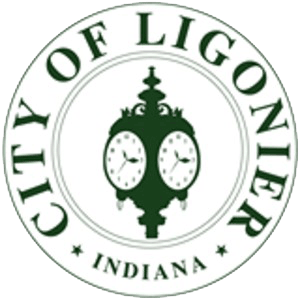Key Contacts
Benjamin Glowinski
Superintendent
Other Staff Members
- Kendra Replogle, Assistant Superintendent/Lab Tech
- Kris Funk, Operator
- Andrew Magdich, Operator
- Jaylun Shaffer, Operator
Wastewater Department Services
The Wastewater Department is responsible for maintaining and operating the city’s wastewater collection system, including lift stations and all related equipment within the wastewater treatment plant. Services include:
- Operating and maintaining sewer lines, lift stations, and plant equipment
- Responding to sewer-related issues such as:
- Odors
- Overflows
- Back-ups
- Utility locates
- Tap inspections
The department works to ensure safe and efficient wastewater management to protect public health and the environment.
Rates
For Rate information visit the Ligonier Municipal Utilities Page
Combined Sewer Overflow Notice
The City of Ligonier's wastewater collection system consists of both combined sewers and separated sewers. The combined sewers were designed to convey both sanitary wastewater and runoff from rainfall or snowmelt, while sanitary sewers collect and convey strictly sanitary wastewater.
The City of Ligonier estimates that approximately 49% of its sewer service areas are comprised of combined sewers that convey both sanitary wastewater and storm water. These are located in the older central, Southeast, Northeast, Northwest, and Southwest portions, of the city.
The City of Ligonier collection system currently is capable of providing hydraulic relief of the combined wastewater flow at four Combined Sewer Overflow (CSO) points. The wastewater collection system currently experiences approximately 50 CSO events per year, specifically during periods of heavy rainfall and excessive snowmelt.
During CSO events, water quality downstream of the four CSO's may be impaired within the Elkhart River. Adverse health effects may occur to persons entering this waterway to wade or swim during and immediately following CSO events. Special precautions should be taken to prevent accidental or intentional ingestion of this water.
Persons interested in direct notification of CSO events via by email may provide contact information, through a written request, to:
Facility Manager
305 Bridge Street
Ligonier, Indiana 46767
History of the Wastewater Treatment Plant
The city's first wastewater treatment plant was built in the 1930s and consisted of a dry well pumping station which doubled as the lab/office, two primary clarifiers and one fixed cover digester.
The first plant upgrade took place in 1972 which increased the plant design capacity to 520,000 gallons per day. In the expansion, two additional larger primary clarifiers were added; along with the plant's first biological processes- that being a standard rate trickling filter. Also added was a new lab-office building, one secondary clarifier, a chlorination system for disinfection and one floating cover digester.
The next plant expansion took place in the early 1990s. In that expansion, two bio-towers replaced the existing trickling filter. This was done to achieve ammonia removal in conjunction with the addition of a solids contact stabilization process. Two more primary clarifiers were constructed bringing the total to six operational primary clarifiers. Two new 50x15 secondary clarifiers with a capacity of 220,304 gallon each were included in the project to replace the single secondary clarifiers from the 1972 expansion. That tank then was converted to a larger chlorination chamber for disinfection. A sulfur dioxide system for de-chlorination was also incorporated into the plant to meet new government regulations for chlorine reduction. In this expansion the plants design flow increase to 1.5 million gallons per day with a peak daily flow of 3.75 million gallons which is the plants design flow rate today.
In 2002, all chemicals for disinfection and de-chlorination, those being chlorine and sulfur dioxide were removed from use and all related equipment removed from the plant. An ultraviolet light system was installed for non-chemical disinfection.
In 2007, the Bio-Tower process was replaced by an extended aeration activated sludge process consisting of two tanks with operating capacity of 300,000 gallon per tank. Other pumps, controls and blower were added and or upgraded during this time also.
In 2017 an upgrade was completed to add a third clarifier, aerated digester, effluent aeration, and update the pumps, ultraviolet disinfection, and sludge handling process. This project increased the peak flow to 4.5 million gallons per day. At completion of this project the Storm Sewer was separated from the Sanitary Sewer and all the Combined Sewer Overflows were removed.”
Permit Requirements
On March 1st, 2021, the City of Ligonier's new NPDES (National Pollution Discharge Elimination System) permit went into effect. The permit is issued by the Indiana Department of Environmental management and must be renewed every five years.
The compatible pollutants listed in the permit for treatment are TSS (total suspended solids), CBOD (carbonaceous biochemical oxygen demand), Phosphorus, pH, D.O (dissolved oxygen), E-coli, and Ammonia. Compatible pollutants are pollutants that can be treated in a conventional municipal treatment plant. Non-compatible pollutants that must be monitored are Cadmium, Chromium, Chloride, Lead, Nickel, Silver, Zinc, Copper, Cyanide and Mercury.
